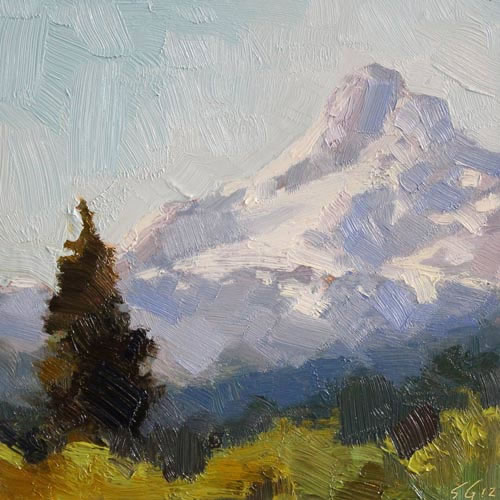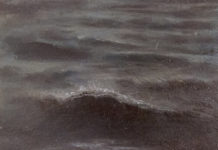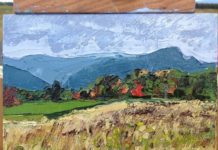
What’s the best white paint? Scott Gellatly says the answer is easy.
Gellatly enjoys wearing two hats — of a fine artist and the product manager at Gamblin Artists Colors — and this vantage point allows him to definitively comment on which white paint is the best. “There is no such thing as a perfect art product,” he says with a laugh. “That is a myth unto itself.”
And there is the answer. There is no perfect white. There is no perfect consistency for white, and there is no perfect pigment. It depends on how you like your white paint to handle, and what you are using the white pigment for. “I think it is personal choice and personal taste,” says Gellatly. “Having said that, there are very real differences in the many different whites that are available, and painters should make very informed decisions on it. The question is, What do you want to do artistically? There are three white pigments available: titanium, flake white, and zinc white. Everything else comes down to formulation after that. What oil is it bound with? Is it made at a stiff consistency? A quick-drying consistency? A soft, buttery consistency?”

Gellatly explains that the differences between the pigments are marked. Titanium white covers the best — it has the highest level of opacity because its particles are the largest. Zinc white mixes the best due to its relative transparency. And flake white (or lead white), with its medium opacity, has its fans, but its high toxicity makes it problematic for the user, as well as in its manufacturing and disposal.
Mixing with whites — tinting a color so it is lighter and less saturated — is the primary use for white paints. Here is where a painter must choose carefully. “Titanium white has the highest tinting strength,” says Gellatly. “Its large particle size means a greater scattering of light, and that adds to the chalky sense — it’s really a graying-down effect because more of that spectrum of light is brought into the mix. Zinc is better for cleaner mixing.”
Because of the nature of the color white, painters concerned with the archival properties of paints worry about which whites may discolor over time — when white passages yellow, it’s easy to see. Gellatly says this is primarily a function of the oil into which the pigment is mixed, and, again, the size of the pigment particle. Thus, artists may conclude that zinc white is more likely to yellow than titanium white or flake white, but this depends in part on what oil is used. “It’s generally not the pigment that is contributing to discoloration,” says Gellatly. “It is the oil. You see that more in zinc white because with its smaller particle size, the color of the oil comes through more. Any color change in the oil is less noticeable if the particle size of the pigment is larger.”
White paints are important to painters. How important? “It’s not uncommon for white paint to make up at least 50 percent of a painting, depending on the subject matter,” says Gellatly. “And I have the sales figures to back that up. I explain it this way to painters: Just from the sheer manufacturing scheduling of it, we make paint four out of five days of the week. Each day that we make paint, it is in a color family — red, blue, and so on. And one of those days, we make only white paint. That means just by volume, a quarter of the paint we make is white.”
All right, so what white does Gellatly use? The Portland painter does have a preference.
“I want the ability to make a smooth mark but have it stiff enough to make a sharp brush mark with some impasto,” he says. “I want the best of both worlds — stiff enough to make the mark but not so stiff that I have to monkey with it to get the consistency I want. So I use titanium white bound in safflower oil.”
> Click here to subscribe to the free newsletter, Plein Air Today
> And click here to subscribe to PleinAir Magazine so you never miss an issue!




